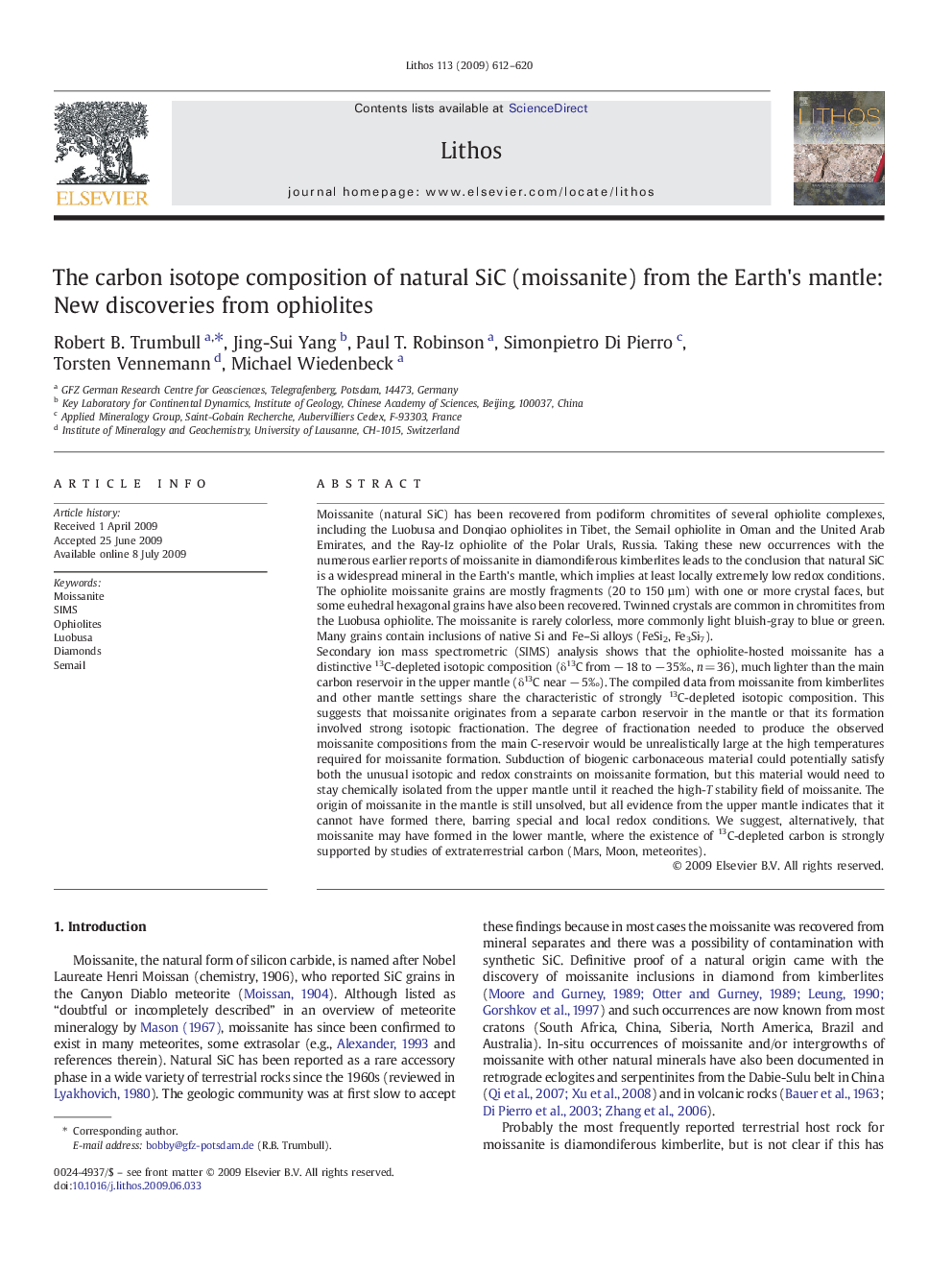| کد مقاله | کد نشریه | سال انتشار | مقاله انگلیسی | نسخه تمام متن |
|---|---|---|---|---|
| 4716954 | 1638738 | 2009 | 9 صفحه PDF | دانلود رایگان |

Moissanite (natural SiC) has been recovered from podiform chromitites of several ophiolite complexes, including the Luobusa and Donqiao ophiolites in Tibet, the Semail ophiolite in Oman and the United Arab Emirates, and the Ray-Iz ophiolite of the Polar Urals, Russia. Taking these new occurrences with the numerous earlier reports of moissanite in diamondiferous kimberlites leads to the conclusion that natural SiC is a widespread mineral in the Earth's mantle, which implies at least locally extremely low redox conditions. The ophiolite moissanite grains are mostly fragments (20 to 150 µm) with one or more crystal faces, but some euhedral hexagonal grains have also been recovered. Twinned crystals are common in chromitites from the Luobusa ophiolite. The moissanite is rarely colorless, more commonly light bluish-gray to blue or green. Many grains contain inclusions of native Si and Fe–Si alloys (FeSi2, Fe3Si7).Secondary ion mass spectrometric (SIMS) analysis shows that the ophiolite-hosted moissanite has a distinctive 13C-depleted isotopic composition (δ13C from − 18 to − 35‰, n = 36), much lighter than the main carbon reservoir in the upper mantle (δ13C near − 5‰). The compiled data from moissanite from kimberlites and other mantle settings share the characteristic of strongly 13C-depleted isotopic composition. This suggests that moissanite originates from a separate carbon reservoir in the mantle or that its formation involved strong isotopic fractionation. The degree of fractionation needed to produce the observed moissanite compositions from the main C-reservoir would be unrealistically large at the high temperatures required for moissanite formation. Subduction of biogenic carbonaceous material could potentially satisfy both the unusual isotopic and redox constraints on moissanite formation, but this material would need to stay chemically isolated from the upper mantle until it reached the high-T stability field of moissanite. The origin of moissanite in the mantle is still unsolved, but all evidence from the upper mantle indicates that it cannot have formed there, barring special and local redox conditions. We suggest, alternatively, that moissanite may have formed in the lower mantle, where the existence of 13C-depleted carbon is strongly supported by studies of extraterrestrial carbon (Mars, Moon, meteorites).
Journal: Lithos - Volume 113, Issues 3–4, December 2009, Pages 612–620